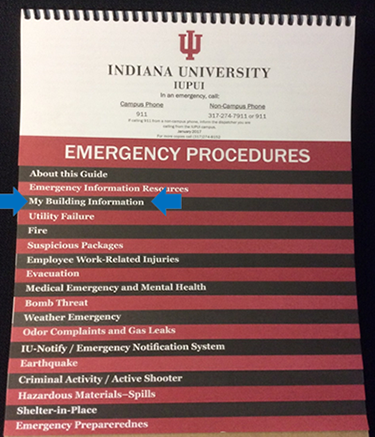“Planning for your
‘Oh No” Moment”

Accidents, although rare, could happen at any time. Near misses on campus, such as the polymerizable compound found in a refrigerator, as well as the active hurricane season this summer/fall reminds us of the unpredictability of life and the need to have a plan should things go wrong. However, careful planning and management of risks can greatly decrease the chances that an accident will occur, or if one does occur, that the effects will not be as great.
Pre-planning for emergencies is especially important because it is so easy to focus on the details of our everyday tasks. When we focus on these small details, we can often lose sight of what might be unsafe about the general procedures we conduct. Therefore, from time to time, it is a good idea to take a step back from the small details and look at the big picture of our work tasks to evaluate and plan for any dangerous or accidental scenarios that might occur in an emergency. As such, I ask, have you planned for your ‘Oh no’ moment? If not, I would encourage you to take a few minutes out of your day to do so. This would involve evaluating the research and experiments in your lab and determining what is the most hazardous procedure being conducted in your lab. If you don’t know, it would be a good time to talk to your PI and become more familiar with the procedures going on in your workplace. Now that you know the most hazardous procedure being conducted in the lab, what is the step in the procedure that would have the greatest negative impact should something go wrong? If you don’t know what to do or haven’t thought about it, I would advise you to do so. You can even make a plan or SOP for that procedure. Appendix A, Form LCS-7, found in the Laboratory Safety and Chemical Hygiene Plan would be a great resource to help you think through this process. Another great resource to consult is Identifying and Evaluating Hazards in Research Laboratories. This document guides you through several different methods, including control banding, job hazard analysis, what-if analysis, checklists, and development of SOPs, to evaluate and plan for hazards in the laboratory.
Finally, while you are planning these lab-specific emergency procedures, it would be a fantastic time to look through the IUPUI Emergency Procedures Flipchart to familiarize yourself with what to do in other emergency situations. It would also be a good time to fill in the “My Building Information” tab so you have that information on hand should an emergency situation arise.

As always, stay safe in the lab! Please contact our office at ehs@iupui.edu or 274-2005 if you have any questions. |